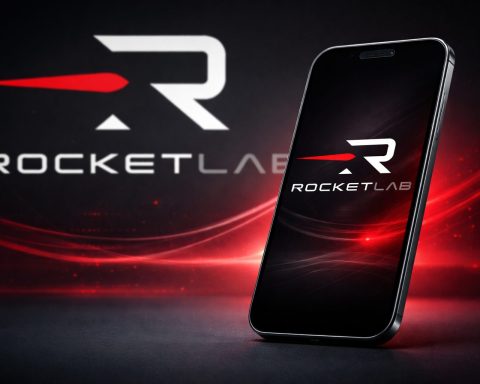- On Aug. 18, 2025, Cantor Fitzgerald analyst C.J. Muse raised Nvidia’s price target from $200 to $240, forecasting Q2 revenue of $48 billion and 2025 data-center revenue of $200 billion, with 2026 at $300 billion.
- Nvidia stock rose nearly 1% on Aug. 18, 2025, as investors bet on continued AI hardware leadership.
- The bullish Nvidia forecast rests on the upcoming “Blackwell” GPU launch cited by Muse as part of the roadmap.
- Palantir Technologies faced valuation scrutiny on Aug. 18, 2025, with Andrew Left calling it “grossly overvalued” at about 588x forward earnings and the stock down about 1.8% that day after its Aug. 12 record high of $186.97 driven by a $10 billion Army contract.
- C3.ai announced Aug. 18, 2025 a major partnership with Brazil’s Eletrobras to apply its AI across the power grid, featuring real-time fault monitoring and rapid failure resolution.
- Alphabet’s Google provided a $1.4 billion backstop for TeraWulf’s data-center expansion, boosting Google’s stake from 8% to 14% via warrants.
- TeraWulf will build the CB-5 data center at Lake Mariner to host AI workloads, supported by Google funding and two 10-year Fluidstack deals for up to 200 MW of power.
- Palo Alto Networks reported Q4 revenue of $2.54 billion, up 16%, and issued a strong FY2026 outlook driven by AI-powered security, plus a planned $25 billion acquisition of CyberArk.
- CEO Nir Zuk will retire after 20+ years, with chief product officer Lee Klarich taking over as CTO to lead the AI security push.
- OpenAI launched ChatGPT Go in India on Aug. 19 at ₹399 per month (about $4.57), roughly 80% cheaper than the global $20 Plus plan and offering ~10× more messages and image generations than the free tier.
Overview: Two Days of High-Stakes AI News
Over the past 48 hours, AI-related stocks and companies made headlines with dramatic forecasts, strategic deals, and market-moving announcements. From chipmakers to software firms and Big Tech giants, the AI sector buzzed with activity. Nvidia got a bullish new forecast, Google poured funding into AI infrastructure, Palantir faced sharp valuation criticism, C3.ai clinched a major partnership, and OpenAI slashed prices to grab market share. Even cybersecurity leader Palo Alto Networks credited AI for its upbeat outlook. Below is a comprehensive roundup of the key AI stock news from August 18–19, 2025, including expert quotes, market reactions, and what it all means.
Nvidia’s AI Outlook Spurs Analyst Hype
Nvidia (NVDA) – the poster child of the AI chip boom – saw fresh Wall Street enthusiasm. Cantor Fitzgerald analyst C.J. Muse dramatically boosted Nvidia’s price target from $200 to $240 on Aug. 18, citing surging demand for Nvidia’s data-center chips and upcoming “Blackwell” GPU launch [1]. Muse projected Nvidia’s Q2 revenue at $48 billion (well above consensus) and predicted an unprecedented $200 billion in data center revenue for 2025 and $300 billion in 2026, far exceeding current market expectations [2]. This bullish forecast rests on massive hyperscaler spending, a $1.5 trillion global AI investment pipeline, and enterprises racing to adopt Nvidia’s next-gen AI platforms [3] [4]. Nvidia’s stock ticked up nearly 1% on Monday in response, as investors bet that the company will continue to dominate the AI hardware space. Morgan Stanley likewise reiterated an Overweight rating, pointing to Nvidia’s robust roadmap beyond Blackwell and ongoing platform advancements [5] [6].
Palantir’s Valuation Under Fire, Shares Slip
Palantir Technologies (PLTR), a high-flying AI software stock, hit turbulence as skeptics called its valuation into question. The stock fell ~1.8% on August 18 amid intense scrutiny of its lofty price multiples [7] [8]. Noted short-seller Andrew Left slammed Palantir as “grossly overvalued”, noting it trades at an astronomical 588× forward earnings, versus an estimated 17× for a peer like OpenAI [9]. Left argued that even applying OpenAI’s more modest valuation multiple to Palantir would imply a 77% drop in its share price (to about $40) [10]. His critique comes after Palantir’s stock recently hit a record high of $186.97 on Aug. 12, fueled by AI hype and a $10 billion U.S. Army contract win, only to pull back ~6.9% in the days following [11]. Bulls like TV personality Jim Cramer have cheered Palantir’s AI potential, but skepticism is growing about whether the company can justify its sky-high premium. “While government contracts and AI platform growth justify some optimism, valuation concerns persist,” wrote one analysis, even as Palantir touts new deals [12]. The clash between Palantir’s long-term AI promise and its near-term financials has put the stock under a microscope.
C3.ai Rallies on Major Utility Partnership
Enterprise AI software firm C3.ai (NYSE: AI) got a boost from a significant international deal. The company announced on Aug. 18 a partnership with Brazil’s largest utility, Eletrobras, to apply AI across its power grid operations [13] [14]. News of this deployment – which will use C3.ai’s platform for real-time fault monitoring and rapid failure resolution in Eletrobras’s vast transmission network – sent C3.ai shares up roughly 2% on the day [15] [16]. The C3 AI Grid Intelligence software will help “increase the network’s resilience and reliability at a large scale by correcting failures more quickly,” the companies said in a joint statement [17]. Eletrobras’s embrace of AI is part of a broader trend of power utilities adopting smart tech to modernize aging infrastructure and guard against outages. For C3.ai, landing one of Latin America’s biggest energy companies marks a strategic win that expands its footprint in the energy sector [18]. Analysts noted that the deal validates C3.ai’s offerings and could open doors to more industrial AI projects. Investors responded by nudging C3.ai’s stock into positive territory, reflecting optimism about the revenue and visibility such large deployments can bring.
Google’s $1.4 Billion Bet Spurs AI Infrastructure Play
In a surprise cross-sector move, Google (via parent Alphabet) made a billion-dollar investment to expand AI infrastructure – and it involved a Bitcoin mining firm pivoting to AI. TeraWulf (WULF), a sustainable crypto-miner, revealed that Google will provide a $1.4 billion backstop for its data-center expansion, in exchange for warrants that boost Google’s stake in TeraWulf from 8% to 14% [19] [20]. This infusion – effectively backing TeraWulf’s financing for new high-density computing facilities – sent TeraWulf’s stock soaring over 12% on Monday [21]. The Maryland-based miner recently inked two 10-year deals with cloud provider Fluidstack to repurpose up to 200 MW of its power capacity for AI and high-performance computing, rather than crypto [22]. TeraWulf will build a new data center (“CB-5”) at its Lake Mariner site to host these AI workloads, supported by Google’s funding and technical collaboration. “By adding CB-5, we are … further deepening our strategic alignment with Google as a critical financial partner in delivering the next generation of AI infrastructure,” said TeraWulf CEO Paul Prager in a statement [23]. He called the deal a “game changer” for the industry [24]. For Google, the partnership secures additional capacity for its AI initiatives (on top of its own data centers) and underscores the lengths tech giants will go – even teaming with crypto firms – to scale up AI computing power. It also highlights how energy-intensive AI is blurring lines between cryptocurrency miners and AI cloud providers in the hunt for affordable computing resources.
Palo Alto Networks Surges on AI-Powered Cybersecurity
Cybersecurity heavyweight Palo Alto Networks (PANW) saw its stock jump about 5% in late trading on Aug. 18 after delivering strong earnings and upbeat forecasts credited to AI [25]. The company’s fiscal Q4 revenue rose 16% to $2.54 billion, and its new FY2026 outlook topped Wall Street estimates, buoyed by “growing demand for its artificial intelligence-powered cybersecurity solutions,” according to Palo Alto’s announcement [26]. CEO Nikesh Arora highlighted an AI-driven upgrade cycle as enterprises modernize their defenses amid a wave of high-profile hacks [27]. Palo Alto has rolled out new AI-infused products – from its Cortex Cloud platform to “Prisma AI RS,” a security suite to protect AI applications – and even plans a $25 billion acquisition of CyberArk to expand into identity management [28] [29]. “The company benefits from both net new AI spending as well as a reallocation from services to products (via automation),” observed Morningstar analyst Malik Ahmed Khan, noting that AI is boosting demand for Palo Alto’s software over traditional services [30]. He added that the pending CyberArk Software buyout would “get them access to more customers to cross-sell identity” tools between the two firms’ client bases [31]. Along with the rosy outlook, Palo Alto announced a leadership change – longtime CTO Nir Zuk (a company founder) is retiring after 20+ years, with chief product officer Lee Klarich taking over as CTO [32] [33]. Klarich will lead Palo Alto’s push into AI-driven cybersecurity, as the firm doubles down on automation and machine learning to stay ahead of evolving threats. Investors appeared encouraged that Palo Alto is successfully leveraging AI to both improve its products and drive new sales, as evidenced by the stock’s post-earnings pop.
OpenAI Targets India with Low-Cost ChatGPT Plan
Meanwhile in the AI software realm, OpenAI – the startup behind ChatGPT (and heavily backed by Microsoft) – made a notable product move aimed at emerging markets. On Aug. 19, OpenAI launched “ChatGPT Go” in India, a new subscription tier priced at just ₹399/month (≈$4.57) – its cheapest paid plan anywhere [34] [35]. This India-exclusive plan offers users roughly 10× more messages and image generations than the free tier, plus faster response times, giving budget-conscious customers greater access to advanced GPT-4 capabilities [36]. The steep discount (ChatGPT Go is about 80% cheaper than the global $20/month Plus plan) reflects the price-sensitive nature of India’s internet market, which now counts nearly 1 billion users [37]. “ChatGPT Go is designed for Indians who want greater access … at a more affordable price,” the Microsoft-supported company said, emphasizing its commitment to India as a growth market [38]. OpenAI CEO Sam Altman visited New Delhi earlier this year and even discussed plans to “create a low-cost AI ecosystem” with India’s IT minister [39]. India is already OpenAI’s second-largest user base after the U.S., and may soon become the biggest, Altman noted [40]. By slashing prices, OpenAI is aiming to rapidly grow its Indian user adoption and fend off rivals as global competition in generative AI heats up. The move also indirectly benefits Microsoft – which integrates OpenAI’s tech into Azure and Office – by expanding the reach of ChatGPT’s ecosystem. Analysts say this pricing strategy could pressure other AI service providers to tailor offerings for high-volume emerging markets. OpenAI’s initiative shows that even as AI firms chase enterprise deals and big contracts, they’re also racing to capture the next billion users with localized products and aggressive pricing.
Conclusion: AI Hype Meets Execution in the Market
Over these two days, the stock market witnessed how AI hype is translating into real corporate moves – and real investor reactions. Chipmakers like Nvidia are riding high on optimistic forecasts for AI demand, while enterprise software firms such as C3.ai and Palantir are striving to convert hype into tangible deals (and facing scrutiny when valuations outpace results). Tech titans Google, Microsoft, and Amazon (via Arm’s hiring move) are making strategic bets to ensure they aren’t left behind in the AI compute arms race, whether through massive investments or infrastructure expansion [41] [42]. Meanwhile, companies in traditional sectors – from utilities to cybersecurity – are aggressively infusing AI into their strategies, driving stock swings and prompting bold claims from executives and analysts alike. As seen in this 48-hour snapshot, AI remains the central narrative on Wall Street in 2025, with every partnership, product launch, and earnings call dissected for its AI angle. Investors are both enthusiastic and wary: rewarding firms that show AI-fueled growth or credible innovation, but quick to punish those seen as overvalued or underdelivering. With more earnings on the horizon and regulatory attention growing, the AI stock rollercoaster is likely far from over – but for now, these were the key developments that defined August 18–19 in AI.
Sources: The above information is based on reports from Reuters, Decrypt, Investing.com, and other financial news outlets, including direct company statements. Key references include Reuters dispatches on Palo Alto Networks’ earnings [43] [44], the C3.ai–Eletrobras deal [45] [46], and OpenAI’s India launch [47] [48]; analysis of Nvidia by AInvest and others [49] [50]; AInvest’s summary of Palantir’s stock pullback and short-seller commentary [51] [52]; and Decrypt’s coverage of Google’s investment in TeraWulf [53] [54]. These illustrate the dynamic and multifaceted nature of recent AI-focused stock news.
References
1. www.ainvest.com, 2. www.ainvest.com, 3. www.ainvest.com, 4. www.ainvest.com, 5. www.ainvest.com, 6. www.ainvest.com, 7. www.ainvest.com, 8. www.ainvest.com, 9. www.ainvest.com, 10. www.ainvest.com, 11. www.ainvest.com, 12. www.ainvest.com, 13. www.reuters.com, 14. www.reuters.com, 15. www.investing.com, 16. www.investing.com, 17. www.reuters.com, 18. www.investing.com, 19. decrypt.co, 20. decrypt.co, 21. decrypt.co, 22. decrypt.co, 23. decrypt.co, 24. decrypt.co, 25. www.reuters.com, 26. www.reuters.com, 27. www.reuters.com, 28. www.reuters.com, 29. www.reuters.com, 30. www.reuters.com, 31. www.reuters.com, 32. www.reuters.com, 33. www.reuters.com, 34. www.reuters.com, 35. www.reuters.com, 36. www.reuters.com, 37. www.reuters.com, 38. www.reuters.com, 39. www.reuters.com, 40. www.reuters.com, 41. www.reuters.com, 42. decrypt.co, 43. www.reuters.com, 44. www.reuters.com, 45. www.reuters.com, 46. www.reuters.com, 47. www.reuters.com, 48. www.reuters.com, 49. www.ainvest.com, 50. www.ainvest.com, 51. www.ainvest.com, 52. www.ainvest.com, 53. decrypt.co, 54. decrypt.co










